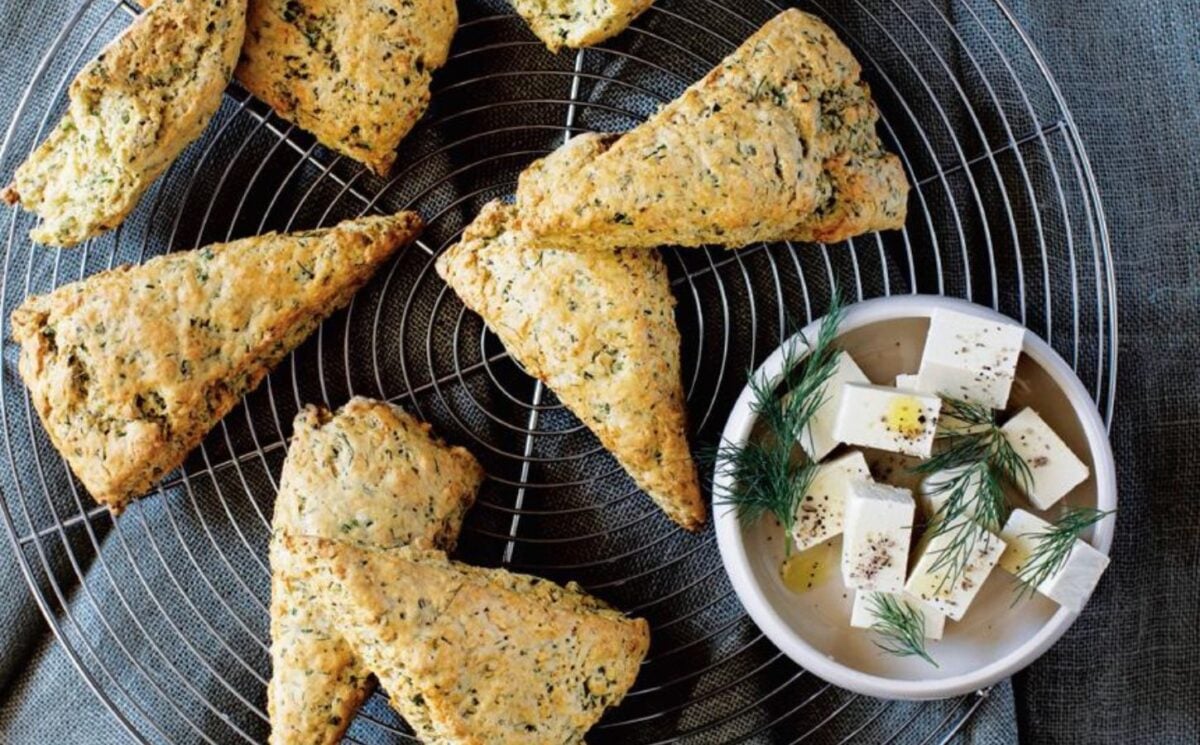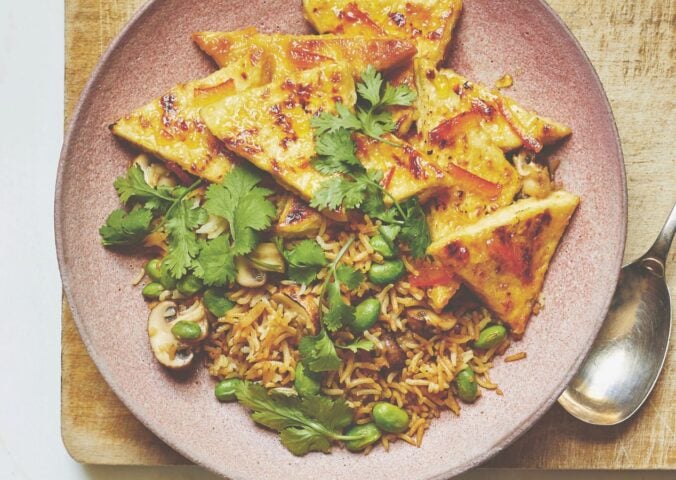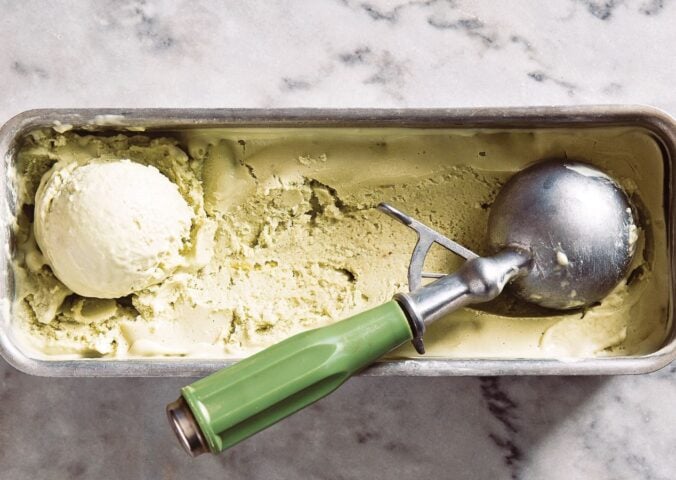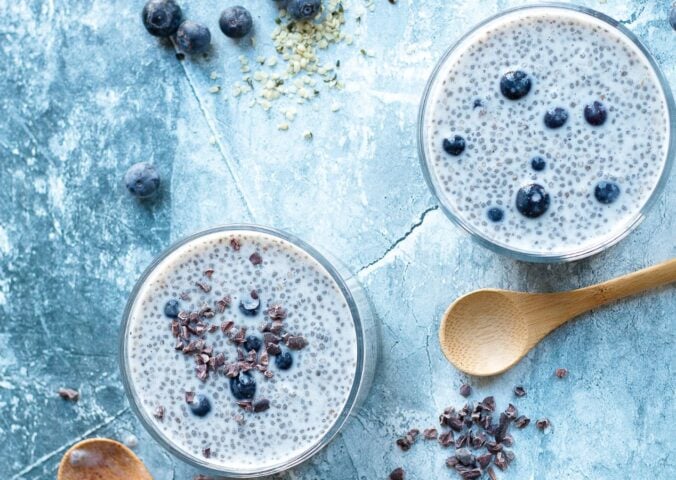We may still technically be in winter, but what better way to manifest that springtime feeling than with a batch of freshly baked herb scones? Made using vegan butter, plant-based macadamia feta cheese, and nutritional yeast, they are entirely dairy and egg-free!
Don’t worry, if you don’t have time to make your macadamia feta from scratch, you can substitute it with a store-bought vegan cheese. But we would recommend giving it a go yourself, it truly makes the difference!
Are scones vegan-friendly?
Scones are typically made using eggs and dairy, meaning they aren’t suitable for a vegan diet. The eggs are used to bind together the dry ingredients, while milk and butter are often used for adding flavor and moisture.
That being said, it is fairly easy to substitute butter and milk with plant-based alternatives. You can also replace the eggs with an egg replacer, but in this vegan herb scone recipe, it isn’t at all necessary. The mix of soy milk and vegan butter does all of the work for you!
What is the secret to making good scones?
A good scone should be rich and crumbly but if yours are looking and feeling a little lacklustre then check out our secrets to scone greatness:
- Use frozen vegan butter: The colder the better, this prevents the butter from melting before it is baked, allowing the scone to become crumbly and flaky. Top tip: if the butter is too frozen to cut, use a grater instead.
- Experiment with different flours: If you prefer your scones to be earthy and dense, then use a mix of all-purpose flour and spelt flour, like in this vegan herb scone recipe. But if you prefer a lighter scone, you can replace some of the all-purpose flour with pastry flour instead. It is entirely up to you!
- Use your hands: Using your hands to bake isn’t just therapeutic, it will also help you to produce better scones! It is really easy to overmix scone dough when using a food processor, whereas, with your hands, you can get a good sense of how well mixed everything is.
What herbs can you put in scones?
In this vegan herb scone recipe, Ed Tatton has suggested a mix of fresh herbs, including dill, parsley, and chives. However, you could also try out using tarragon, rosemary, thyme, or oregano. It depends on the types of flavors you enjoy.
We do recommend using fresh herbs, as instructed, but if you only have dried herbs to hand this is also fine. But do make sure to use a lot less than you would fresh since the flavor will be a lot more intense.
What can you serve these vegan scones with?
In our opinion, scones are best enjoyed warm out of the oven with a slab of vegan butter. Since these are savory scones, we would also recommend serving them with other savory dips and spreads, like vegan cream cheese or a good quality chutney. You could also serve them with any leftover cubes of macadamia feta.
Scone recipe troubleshooting
Is something not quite right with your vegan scones? Check out these handy troubleshooting tips:
Why are my scones not fluffy?
The fluffiness of your scones is dependent upon the mixing of your dough and the choice of flour. Make sure to follow this recipe closely, or opt for a light pastry flour instead. When you are mixing all of the ingredients, make sure you don’t overmix them. This could lead to a tighter, much denser dough. Stop mixing once you’ve achieved a soft dough with no dry patches.
How do you make scones rise higher?
There are a few reasons why your scones may not get a good rise on them, most of all it could be down to the temperature of the butter. You need to make sure that the butter stays cold as you rub it into the flour. If it begins to melt then it will stop the butter from steaming and giving rise to the dough whilst it is cooking in the oven. It could also be down to your baking powder, make sure it is still in date and that it isn’t old and stale.
Top tip: Don’t spread your scones too far apart on the baking tray, only leave a small amount of space so they rise upwards rather than outwards.
Why are my scones tasteless?
More often than not, the taste of your baked scones will come down to the salt content. Salt helps to elevate flavors, so even if you want to leave it out, we recommend you don’t! Moreover, the flavor can be influenced by the quality of your ingredients. Opt for high-quality flours, and we do suggest you try using whole-grain spelt flour as suggested in this recipe. Spelt adds a lovely nutty flavor to the scones. Moreover, choose a vegan butter that you would enjoy eating. The more buttery, the better.
Vegan herb scone recipe

Ingredients
Scones
- 110 g (½ cup) cold vegan butter
- 400 g (2½ cups) all-purpose flour
- 40 g (2 tablespoons + 2¼ teaspoons) baking powder
- 50 g (1/3 cup) stone-ground whole-grain spelt flour
- 25 g (½ cup) nutritional yeast
- 5 g (1 teaspoon) fine sea salt
- 2.5 g (½ teaspoon) cracked black pepper
- 250 g (1 cup) unsweetened soy milk
- 200 g (1¾ cups)
Macadamia Feta cut into ¼-inch (5mm) cubes - 50 g (⅔ cup) finely chopped fresh herbs such as dill, parsley, and chives
Glaze
- 20 g (1 tablespoon + 2 teaspoons) unsweetened soy milk
- 5 g (1 teaspoon) pure maple syrup
- 2.5 g (½ teaspoon) olive oil
Instructions
Make the scones
- Cut the butter into ¼-inch (5mm) cubes and freeze until needed.
- Preheat the oven to 350°F (175°C). Line a large baking sheet with parchment paper or a silicone baking mat.
- Sift together the all-purpose flour and baking powder into a large bowl. Add the spelt flour, nutritional yeast, salt, and pepper and whisk everything together.
- Add the frozen butter. Using your fingertips, rub the butter into the flour until the mixture looks like bread- crumbs. Add the soy milk, macadamia feta, and chopped herbs. Using one hand while the other hand holds the bowl still, gently incorporate everything together just until a soft dough forms and no dry patches remain. Do not overmix.
- Lightly flour the work surface and the dough. Roll out the dough into a rectangle ¾ to 1 inch (2 to 2.5cm) thick. Using a large chef’s knife, cut the dough crosswise into 4 rectangles, then cut each rectangle diagonally to make 8 equal-size triangles. Arrange them upside down on the lined baking sheet, leaving a little space between them to allow for growth and even baking. (The side that was on the work surface becomes the top, which helps with the rise and a nicer finished appearance.)
Glaze and bake
- In a small bowl, stir together the soy milk, maple syrup, and olive oil. Using a pastry brush, lightly brush the tops of the scones a couple of times.
- Bake until the tops are golden brown, 15 to 17 minutes. Transfer the scones to a cooling rack to cool for at least 10 minutes before serving.
- Store in an airtight container in the fridge for up to 3 days. Lightly toast before serving.
Excerpted from BReD by Edward Tatton and Natasha Tatton. Copyright © 2023 Edward Tatton and Natasha Tatton. Photography by Janis Nicolay. Published by Penguin, an imprint of Penguin Canada, a division of Penguin Random House Canada Limited. Reproduced by arrangement with the Publisher. All rights reserved.
More like this:





